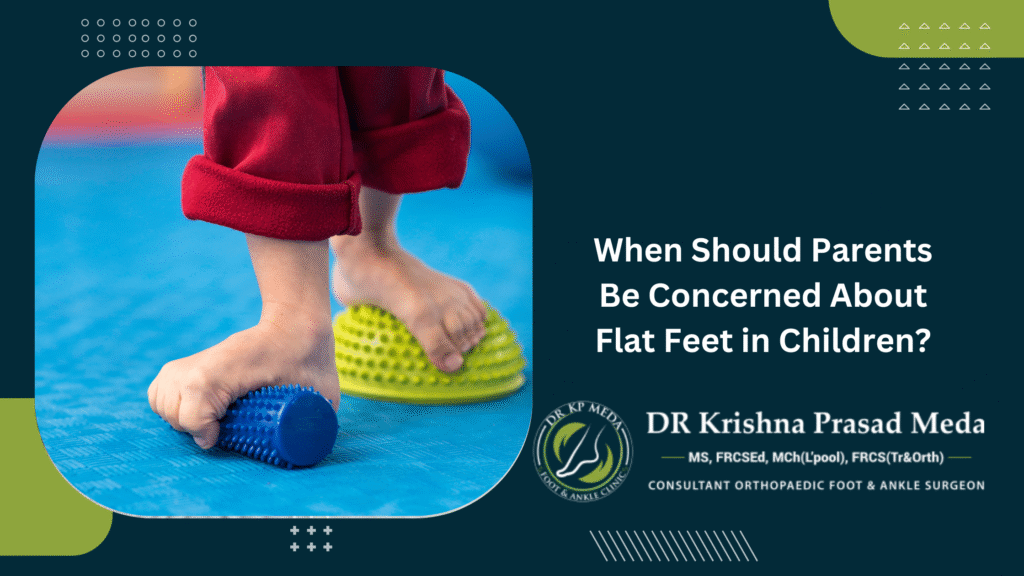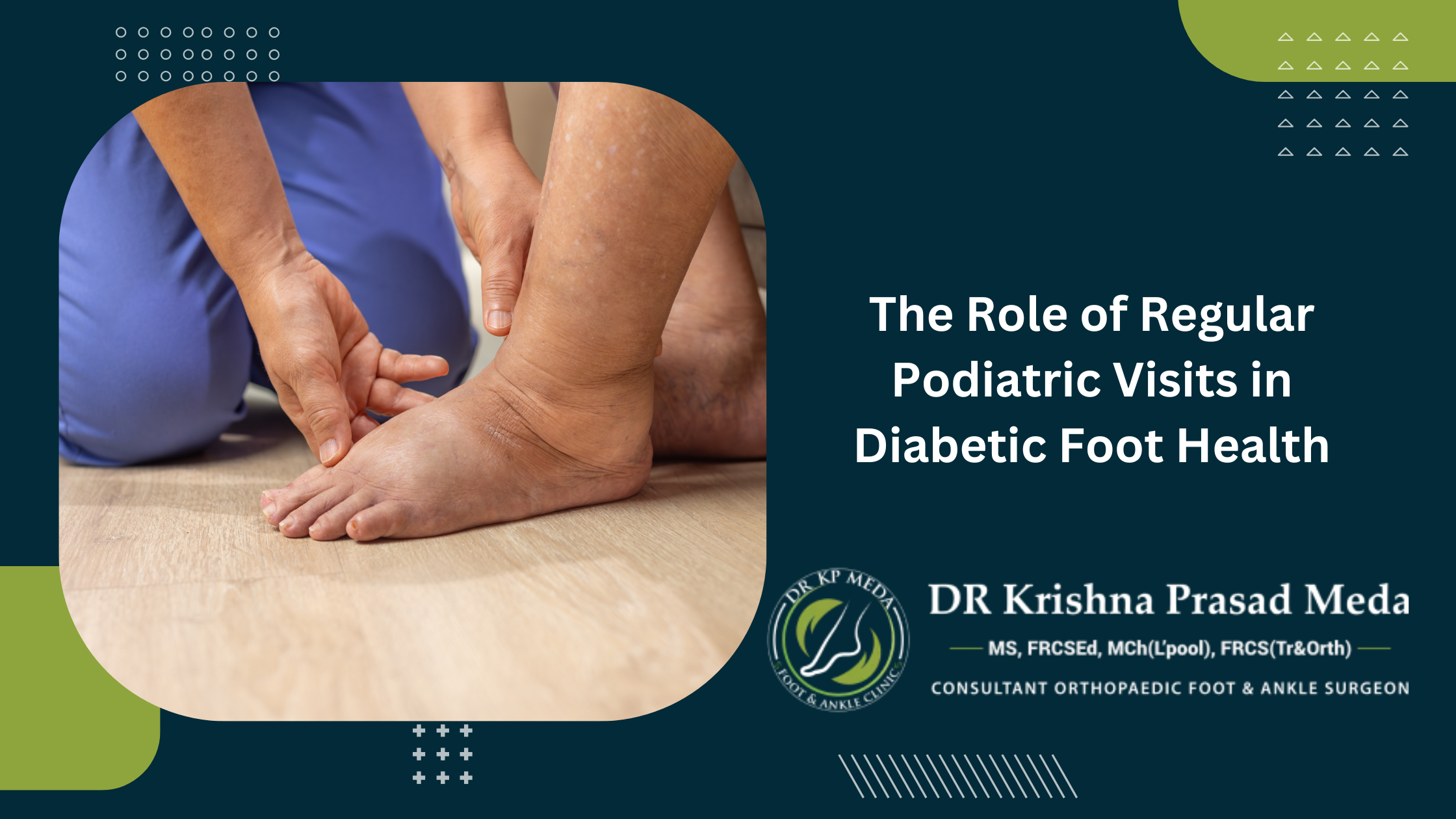When Should Parents Be Concerned About Flat Feet in Children?

Flat feet, or pes planus, are a condition seen in children during growth. Most are benign and correct with increasing age. However, there are situations when flat feet may indicate an underlying pathology that needs treatment. This brings to the forefront a very important question for most families: When should parents worry about flat feet in kids?
Understanding flat feet is essential to distinguish between normal development and conditions that may affect a child’s mobility or quality of life. This blog explores what causes flat feet, how to identify concerning symptoms, and the types and treatment options available.
What are Flat Feet in Children?
Flat feet in children are a condition where the arches of the feet are lower than usual or even non-existent, which makes the whole sole hit the ground when standing. As children age, their foot arches usually develop and become more prominent.
Nevertheless, in certain instances, the arches might not develop fully, or the child could experience pain or ambulatory issues. For this reason, knowing when parents should worry about a child’s flat feet is important to guaranteeing proper physical growth in a child.
Types and Treatment of Flat Feet
There are two primary types and treatment groups of flat feet in children:
1. Flexible Flat Feet
This is the most prevalent type in children. The arch shows up while the child is sitting or on tiptoes, but vanishes when he stands flat-footed. Flexible flat feet are generally painless and do not need any treatment unless the child has discomfort or issues with gait.
Treatment: Supportive shoes or orthotic inserts can sometimes be used to give relief and avoid long-term complications.
2. Rigid Flat Feet
In this less frequent form, the arch is not there even when sitting or on tiptoes. Rigid flat feet can result from abnormalities of the bones, tight tendons, or underlying neurological or muscular disease.
Treatment: Medical testing is required. Depending on the reason, treatments will vary with physical therapy, custom orthotics, or, in extreme circumstances, surgery.
Recognizing the types and modes of treatment will empower parents to make better decisions. However, most parents are unsure when to worry about flat feet in children, even when there are no symptoms.
Signs Parents Need to Monitor
These are some signs that might signal an issue that needs further assessment:
Pain: Persistent pain in the foot, ankle, knee, or even lower back might indicate an underlying problem with flat feet in children beyond the usual.
Fatigue: If the child complains of tired legs upon walking or playing, this could indicate inefficient foot mechanics.
Unusual Gait: Tripping often, walking on toes, or an irregular walk can be indicative of concern.
Shoes Wear Unevenly: Worn-in inner soles or sloping shoes may be indicative of poor alignment.
Stiffness: When the foot of the child is rigid or does not bend, it can be a sign of rigid flat feet or other underlying issues.
These signs make it clearer when parents should worry about flat feet in children.
Diagnosing Flat Feet in Children
If you are sure your child’s flat feet may be a problem, it is advisable to see a pediatrician or a podiatrist. A complete physical examination can make a diagnosis and, if necessary, imaging studies like X-rays. If diagnosed early, further complications could be avoided and improved for your child’s healthy development of the feet.
Preventive Measures and Supportive Care
Although not every case of flat feet in children requires treatment, there are some things parents can do to support healthy foot growth:
Correct Footwear: Stable, supportive shoes with a well-formed arch and heel can straighten out and make feet more comfortable.
Physical Exercise: Promote exercises that strengthen the muscles of the foot, such as walking barefoot on sand, toe curls, or heel raises.
Stretching Exercises: If tight tendons are a problem, stretching exercises can increase flexibility and decrease pain.
Even where treatment is needed, such minor measures can aid the healing process and prevent your child from experiencing future problems. Familiarity with the types and treatment of flat feet enables parents to intervene early and efficiently.
The importance of seeing a Pediatric Podiatrist
In conclusion, children’s flat feet are most often a part of the normal growth process, provided that the child feels no pain or has no problem walking. A pediatric podiatrist has the training and expertise needed to ensure proper diagnosis and treatment of your child’s foot issue.
If you have flat foot problems or other conditions, it’s always best to go see a medical professional. Dr. KP Meda, a very experienced orthopedic expert with more than 23 years of experience, provides competent care and personalized guidance to ensure your feet remain comfortable and in good health.
Don’t let little issues become big problems – book an appointment today and start down the path of better foot care and overall health.
Also Read: Plantar Fasciitis treatment in Dubai
Recent Post

Tailor’s Bunion (Bunionette) – Surgical Techniques and Considerations
Tailor’s Bunion (Bunionette) – Surgical Techniques and Considerations Comfort, Confidence, & Care – Walk without Pain Tailor’s Bunion (Bunionette) is a painful bony bump that

The Role of Regular Podiatric Visits in Diabetic Foot Health
The Role of Regular Podiatric Visits in Diabetic Foot Health Every Step Matters – Lifelong mobility with regular podiatrist visits in Diabetic foot For people

Special Populations: Treating Hammer Toes in Diabetic or Arthritic Patients
Special Populations: Treating Hammer Toes in Diabetic or Arthritic Patients Hammer toes are a frequent deformity where one or more toes curve abnormally at the

When Is It Time for Surgery? Identifying Bunion Stages
When Is It Time for Surgery? Identifying Bunion Stages A bunion is a frequent foot deformity that may result in discomfort, pain, and difficulty with
If you are sure your child’s flat feet may be a problem, it is advisable to see a pediatrician or a podiatrist. A complete physical examination can make a diagnosis and, if necessary, imaging studies like X-rays. If diagnosed early, further complications could be avoided and improved for your child’s healthy development of the feet.
There are two primary types and treatment groups of flat feet in children:

